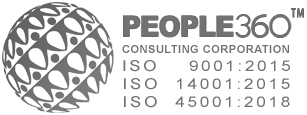Those working on Occupational Safety and Health (OSH) are already quite familiar with safety inspections and safety audits, and these refer to structured processes of examinations to promote OSH. Some people use these terms interchangeably, but there are differences between these two processes.
Companies conduct safety inspections (SI) to identify hazards or maintenance needs through visual examinations and checklists. Depending on the processes or areas to be observed proactively, can be made specifically for or by daily operation users of company assets, the Safety Officers, or others whose work involves OSH These checklists help maintain a system in capturing data and information on the state of a machine or a production area. These are usually answerable by Yes or No, and deviations can be noted in a Remarks column.
But what about safety audits?
Safety Audit (SA) analyzes the Safety Management System's operational efficiency and measures the entire health or a portion of it to determine the extent and quality of controls. SA includes safety inspections, the review of appropriate documents, and interviews of process owners. Done either annually or bi-annually, SA can be conducted by internal and external auditors, with the latter usually done by third parties.
The auditors scrutinize the company's processes and systems to find gaps, difficulties, and shortcomings and help by suggesting ways to improve on the current deficiencies that the company has. These auditors also mention the strengths of the current processes that the company has. SA assesses compliance with internal policies, regulations, and other compliance requirements and looks at the companies' OSH safety management systems' weaknesses. Persons most familiar with them can be those whose organizations have been OHSAS 18001— or ISO 45001—certified. They both refer to the most common Safety Management Systems that are accepted globally.
Moreover, safety audits must first determine that the company has gathered complete documentation of audit evidence, namely records, statements, or information relevant to audit criteria, and cross-check it on the standards of the management system. These standards or sets of policies, procedures, and requirements are called audit criteria. If a company has provided evidence that they conform with the audit criteria, they are certified accordingly.
The use of both shows the organization is serious in its efforts for global conformity on OSH, brave enough to show documented pieces of evidence of said conformity.
People360 uses both extensively in its operations. It has certifications under ISO 9001 (for quality), ISO 14001 (environmental management system), and ISO 45001 (occupational health and safety management system). It may also partly explain the reason why the company continues to thrive even during these painful times. A big hand for safety management systems and its two major tools-safety inspections and safety audit!
Basta Safety, People360!


